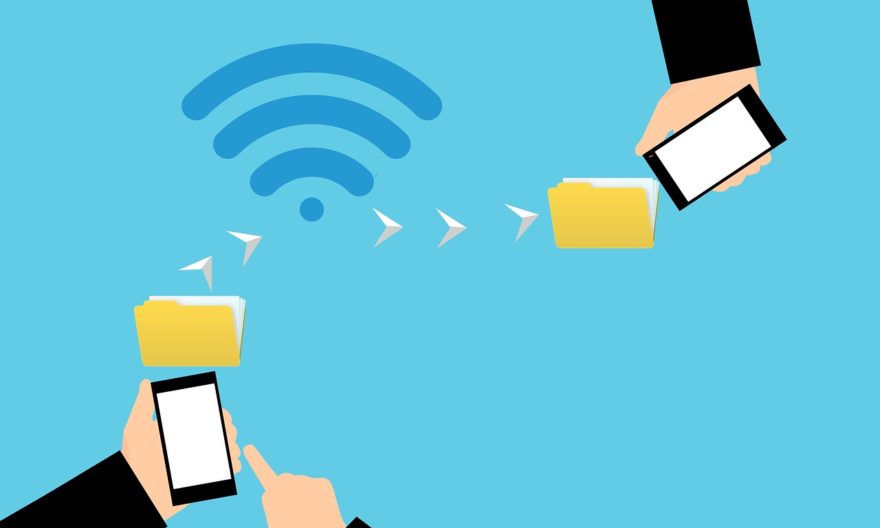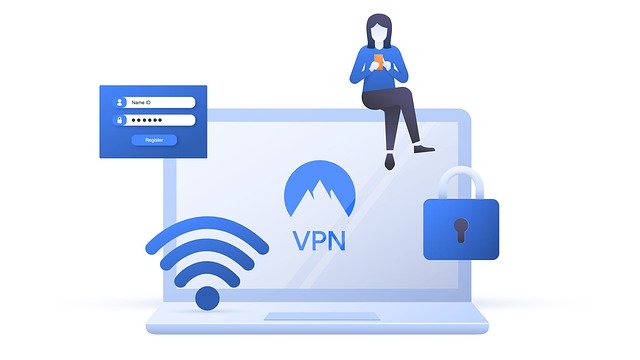
For working professionals, the recent large surge of free and public Wi-Fi has been a tremendous boon, but public WiFi users are unfortunately at risk from hackers. Public Wi-Fi is available in popular public spaces and allows free internet access. These hotspots are so common and widespread that people often connect to them without thinking twice about them. Understanding public WiFi risks could prevent you from falling victim to an attack.
Public Wi-Fi is available almost everywhere, from the nearest coffee shop to the airports. They are used throughout our journey. Moreover, Wi-Fi has made our lives a little easier. But the sensitive details stored on our laptops and smartphones still possess security risks by using public WiFi.
The recent explosion of free, public Wi-Fi has been a major boon for working professionals. You are in serious danger if you connect regularly to public WiFi networks without worrying about the reliability of the hotspots you are using. Knowing how to safeguard yourself will keep your valuable business data secure.
Suggestions to improve the safety of public Wi-Fi
The greatest risk to free public WiFi security is the hacker ‘s ability to position attacker between the point of connection and us. Therefore talking to the hotspot directly, you give the sensitive information data to attacker, who’s going to relays it on then. The attacker can get access to whole piece of data we transfer on the Internet while working in this setup.
- No contact on your personal identifiable information (PII): Many accounts requires you to sign in to things which consist persional information like phone numbers. You may therefore unintentionally allow access to personal information, even if you do not remember while entering it on public Wifi.
- Instead, using private virtual networks (VPNs): A VPN helps you to make safe and secure link over to the Internet to another network. These are an excellent choice for public WiFi networks.
- Using SSL interfaces: Be sure to use secure HTTPS option on all websites you frequently visit when browsing the internet.
- Invest in a data plan without limitations: Almost every time, people find themselves hurriedly linking to public WiFi networks to save money on their mobile bills from overage charges.
- Turn-off file sharing: The very first time you access to a new, unsecured WiFi or network, don’t forget to turn-off file sharing for you by selecting the public option.
- Don’t leave your Bluetooth or Wi-Fi on if you do not use them.
- Try not to connect to websites that carry your sensitive data, such as financial or healthcare accounts.
- Don’t Log on to a network that is not protected by a password.
Know Who Do You Trust
The problem with public Wi-Fi is that there are large amounts of threats to these networks. Although business owners may think they provide a valuable service to their customers, chances are the protection on those networks is weak or non-existent.
A public Wi-Fi network is less secure than your personal one. It is insecure as you don’t know who created it, or who else connects to it. As the people and businesses that operating these Wi-Fi networks are already making money from you.
No public Wi-Fi network is completely safe depending on who is with you as much as on who is delivering it. The more networks you sign up to, the more likely your chances of coming into one that doesn’t handle your data and surfing as seriously as you should.
Risks Associated On Using Public WiFi
Man-in-the-Middle Attacks
Connecting to free, public WiFi brings business risks from third-party surveillance of your company’s data. That is because hackers are able to place themselves between the workers using the WiFi and the point of contact. This helps the intruder to catch all of your traffic, which they will use to steal your personal information, swipe the details of the payment. Like credit cards, and even exploit packages of data to install malware or spyware on your computer.
If we are using an unsecured Wifi they can discover our login name, password, our IP address, and can also track us with Gmap Location using IP. This is because of a honeypot, it is a trap set up to unfairly track, block or neutralize your attempts to use its network.
Network Snooping
This means that all the information you send to the attacker, whether it’s credit card details, passwords, etc. They are placed bare, giving them quick access to any account you ‘re signing into or payment details you ‘re using.
Malware Distribution
They will not only be able to see your traffic but could manipulate it as well. As for the layman, this amounts essentially to intercepting a web server ‘s response before it reaches you. Insert also some malicious and hidden code that will run on your device once the page opens. And then send it along their way. If the attacker did that right, you most likely won’t even notice that until it’s far too late anything has happened. In general, it is enough to encrypt your traffic to prevent this type of attack from happening.
How to stay safe on Public WiFi
Stick to HTTPS
Google Chrome has been letting you know a few weeks ago when the site you are visiting uses an unencrypted HTTP link rather than an encrypted HTTPS encryption by calling the former “Not Secure”.
Don’t give too many details away
If you absolutely need to connect to such networks, stick to places that you trust and consider using an alternative email address that is not your primary one. Shops and restaurants that do so want to remember you via several Wi-Fi hotspots. So it is up to us to decide whether the trade-off for some free internet access is worth it.
Also, turn-off file sharing on your device.
Check What You Sign Up For
Read onto the terms and conditions attached before you connect to a public Wi-Fi connection. You should be able to detect any large red flags, especially what data they collect from your session. Moreover what they do with it. A quick web search will deal with any known problems or problems that other users might have had.
Hackers can access our computer webcam too. It all depends on what all software we have we use and ignores. Every time you click away from a request for updates, bugs in the applications that you use to expose your device to the cyber attack.
Virtual Private Networks
Your protection against unsecured Wi-Fi is the cornerstone of a Virtual Private Network (VPN) service or device. A VPN strongly encrypts all data that flows to and from your computer during each session. And even if a hacker intercepts your connection. They ‘re going to be hard-pressed to decrypt any data they find, even if they’re far more likely to discard it in favor of unprotected users easier to select.

Conclusion
There’s really only one good way to make sure you ‘re safe while using a public WiFi network when it comes down to that. By using a Private Virtual Network, or short VPN. A VPN protects you by building a “tunnel” which is protected by end-to-end encryption for all your traffic.
There is no better way to prevent a public WiFi attack than using a VPN, so be sure to download and install one of the best VPNs to ensure that your security remains uncompromised. If you mostly use your phone to browse when connecting to public WiFi networks, then be sure to read our guide on the best mobile VPN.
Do you like this article? Let us know your thoughts about public WiFi Security on comment section below.
